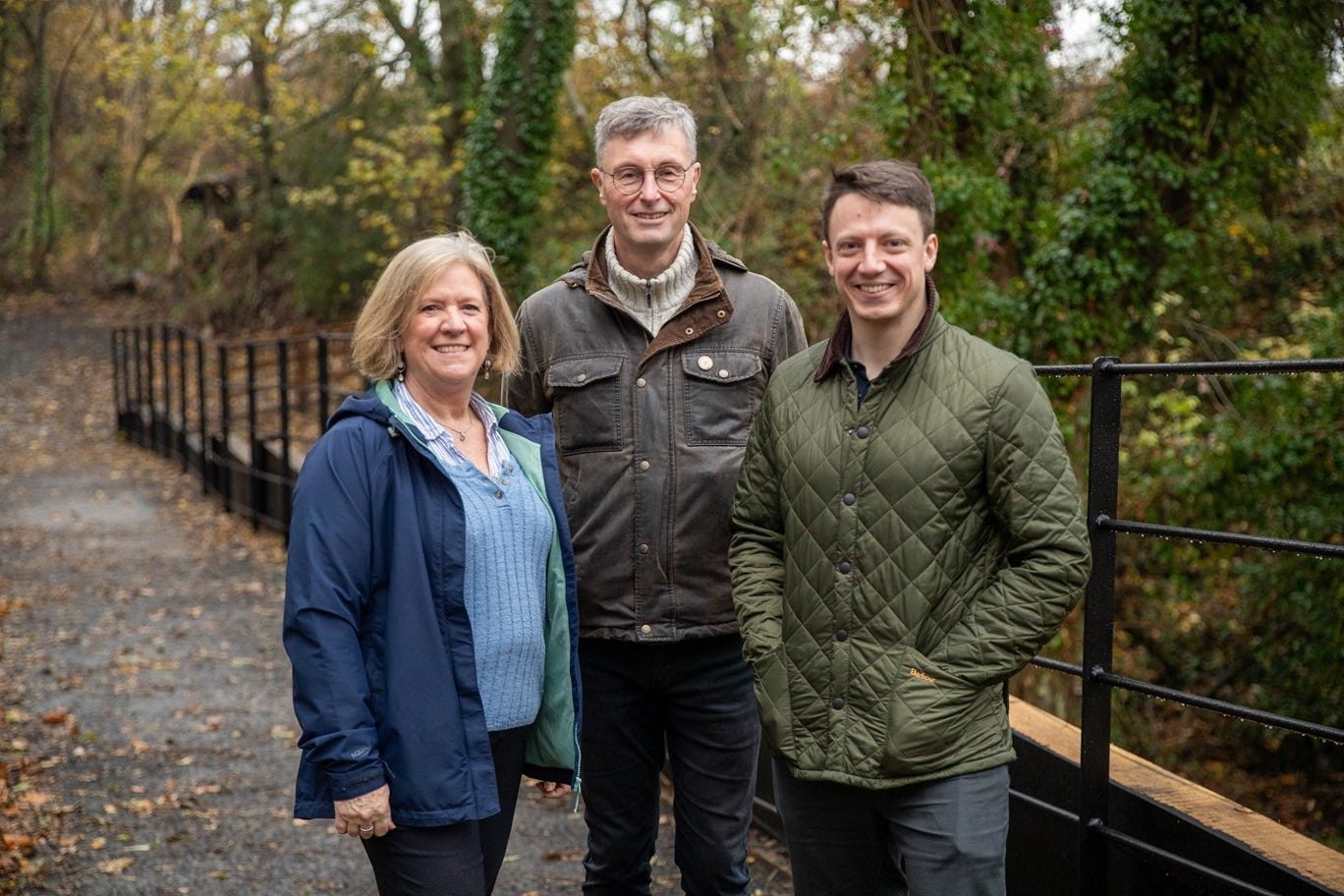Landmark railway sections saved after £7m preservation project
Historic railway heads list of sites removed from At Risk Register. Tony Henderson reports

Sections of the world’s first railway to carry passengers and goods have been saved in what is the 200th anniversary of its first journey.
Four stretches of the Stockton and Darlington Railway (S&DR) have been removed from Historic England’s Heritage at Risk Register.
This is the result of a Durham County Council-led £7m project to create a walking and cycling path along part of the 26-mile route of the former railway.
The sections removed are railway inclines, which were an essential part of the first five miles of the S&DR, because of two ranges of hills at Etherley and Brusselton in County Durham, which were too high for early locomotives to negotiate.
A system was installed of placing a stationary engine at the top of each of the hills, which would pull waggons attached to ropes up the incline and lower them down the other side again.
Coun Tim McGuinness, the council’s portfolio holder for rural, farming and transport, said: “We are delighted that the work we have done has resulted in the S&DR inclines being removed from the Register.
“The Stockton and Darlington line holds a significant place in the history of travel as well as the history of County Durham, as the route of the world’s first passenger rail journey, and the huge scale of the 200-year celebrations that have taken place throughout 2025 stands as testament to its importance.
“The inclines were a revolutionary and integral part of the railway’s story, and we wanted to preserve them for future generations as part of our work to create walking and cycling links as a legacy along the route of the former line.”
Lee McFarlane, inspector of ancient monuments at Historic England, said: “The S&DR is an integral part of Durham’s heritage and identity. By saving these parts of the railway, Durham County Council is helping to secure the legacy and accessibility of this internationally important site for future generations.”
Niall Hammond, chair of the trustees of the Friends of the S&DR, said: “The Friends of the S&DR are pleased to see the fantastic conservation and access works to the remains of the S&DR carried out by Durham County Council, Historic England and partners in recent years.
“The heritage of the S&DR is of international importance, and we look forward to continued partnership working with the council and others to make the most of this amazing heritage for the benefit of the communities of County Durham and our visitors.”
The inclines have been preserved using money from the Council’s Levelling Up grant from government.
Working in partnership with Historic England, the Friends and communities along the line, the project has preserved all identified railway features by either protecting them beneath new surfaces or keeping them exposed where historically appropriate.
The walking and cycling route starts at Phoenix Row near Bishop Auckland and ends at the county border near Newton Aycliffe.
As part of the project, the council is carrying out major footpath improvements along the route — 95 per cent of which have already been completed.
The authority has also installed wayfinding signs and interpretation boards at historic locations along the route. The boards share stories, events and innovations relevant to each spot and feature QR codes linking to additional digital content, to be launched shortly.
A cycle hub with capacity to safely store 30 bikes has also been built within the grounds of Locomotion Museum at Shildon. It was at The Masons Arms in Shildon that the first journey on the S&DR began in 1825, with a new public space featuring commemorative plaques recently being unveiled there by the council as part of the active travel route.
The route is due for completion next spring, when a new bridge over the River Gaunless - part-funded by Historic England - will be opened. The bridge is located at the same spot as the original S&DR bridge, designed by George Stephenson and installed 200 years ago.
Other sites which have come off the At Risk Register are:
Headland and Seaton Carew Conservation Areas, Hartlepool, which are no longer at risk following investment and strong community involvement.
Headland Conservation Area has Anglo-Saxon monastic origins through to Hartlepool’s role as a medieval port and Georgian town. Seaton Carew’s historic seaside character combines fishing village origins with growth as a popular resort.
Both areas were at risk due to deteriorating buildings and spaces, lost architectural features, and unsympathetic alterations.
The Grade I listed St Cuthbert’s Church in Darlington Market Place.
This is one of the North of England’s most significant examples of early English Gothic architecture, featuring a 12th-century design with medieval wooden roofs and a 15th-century stone screen.
By 2013, serious structural and roofing problems emerged. A first phase of roof repairs was undertaken in 2016, followed by a second phase in 2018. Both were funded by the National Lottery Heritage Fund Grants for Places of Worship scheme, with additional support from the Friends of St Cuthbert’s.
Repair works were completed with support from the National Churches Trust, Northumbria Historic Churches Trust and the Durham Diocesan Building Panel.
Added to the At Risk Register is the Tees Transporter Bridge, a key part of the area’s industrial and engineering heritage.
Opened in 1911, its distinctive design with a travelling car or ‘gondola’ suspended below its structure was chosen to avoid interfering with navigation.
While operational, it was the largest working transporter bridge in the world and could carry people and vehicles across the Tees in 90 seconds. Listed at Grade II*, it has featured in many films and TV programmes and has recently been used as a site for extreme sports.
Following safety concerns, the bridge was closed in 2019, with monitoring equipment installed in 2024 to obtain data on how the bridge reacts to wind, tide and temperature.
Middlesbrough and Stockton councils and partners including Tees Valley Combined Authority are currently identifying the next stages in the plan to restore the bridge.






